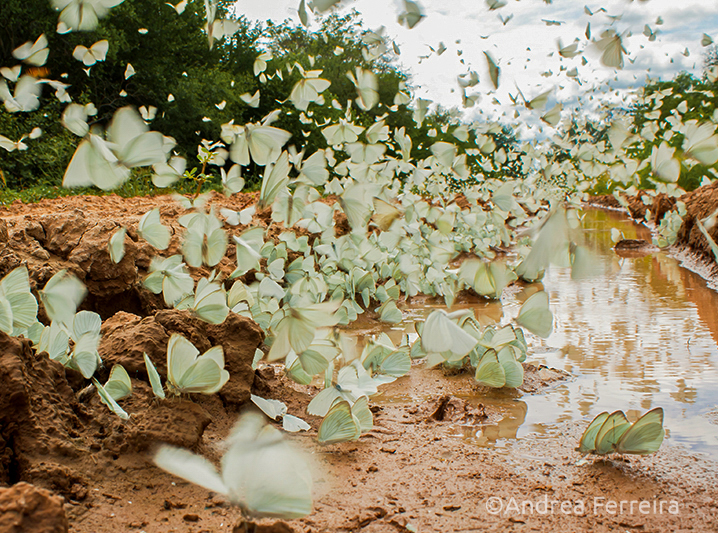This is the latest entry of the Barnes’s Bestiary series, written by journalist, author, World Land Trust (WLT) ambassador and member of the WLT council Simon Barnes. See here to read all of Simon’s other entries so far.
There was a cloud or crowd of butterflies round the vehicle when we set off across the Dry Chaco of Paraguay on the way to Campo Iris. We drove for a couple of hours on unmade roads through this enthralling and forbidding landscape – and not for one second did the butterflies leave us.
We drove on and on, mile after miles, and with every mile, with every revolution of the wheels there were more butterflies: butterflies in millions. It was one of the most extraordinary journeys I have ever made: like being Captain Scott travelling through an Antarctic blizzard: but it was hot and the whiteout was living.
They were exotic only in their numbers; there was something homely about them as we crossed this alarming and alien countryside. They are in the same family as the butterflies loosely referred to in Britain as cabbage whites, and their caterpillars of these also have a taste for brassicas. They were Ascia monuste, called in America the Great Southern White.
This is an idea that my old friend John Burton would have agreed with – and then topped with a tale of his own. He loved the Dry Chaco: for its wildness, for its challenges and for its obscurity, for it’s a place few people know about and fewer still visit. And yes, it’s jam-packed with diversity: 3,400 plant species, 500 bird species, 150 mammal species…
But it also produces spectacles of devastating bioabundance, and that’s one of the reasons why the John Burton Memorial Fund will benefit the Chaco.

